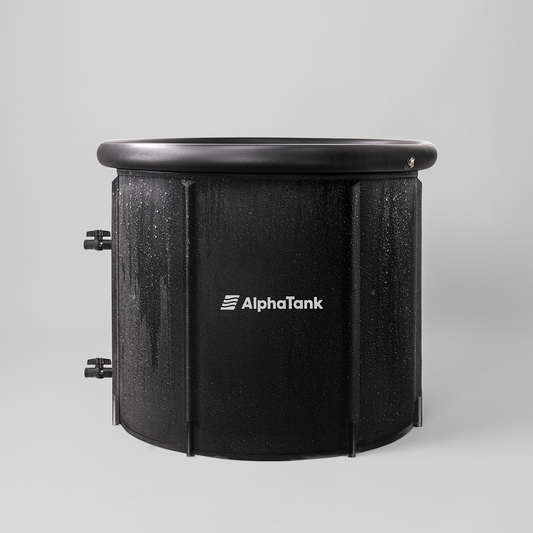Ice bathing, also known as cold water immersion or cryotherapy, is a practice that has intrigued and invigorated people for centuries. It involves submerging oneself in cold water for various health and therapeutic benefits. In this article, we'll explore the fascinating history of ice bathing, from its ancient origins to its resurgence in modern wellness practices and athletic training.
Ancient Origins of Ice Bathing
The practice of ice bathing has deep historical roots, dating back to ancient civilizations. In ancient Rome, public baths were an integral part of daily life, with some featuring cold plunge pools filled with icy water. Roman nobility believed that immersing themselves in cold water could boost their vitality and resilience, making it a noteworthy aspect of their wellness routines.
Similarly, traditional Japanese culture incorporated ice bathing into the practice of "Shinrin-yoku" or forest bathing, where individuals immersed themselves in natural water sources, often in colder temperatures, to enhance spiritual well-being and connect with nature.
Stoic Philosophers and Ice Baths: The Pursuit of Resilience
Stoic philosophers, renowned for their emphasis on self-control, resilience, and mental fortitude, were early advocates of ice baths. They viewed cold water immersion as a means to practice endurance and self-discipline. Figures like Seneca, a Stoic philosopher, believed that enduring cold water helped individuals become more resilient to life's challenges. Ice baths, in this context, were a form of voluntary discomfort aimed at strengthening the mind and body.
Medieval Ice Baths: A Leap in Health Awareness
During the Middle Ages, ice bathing gained popularity in Europe as a therapeutic practice. Visionary physicians like Paracelsus, a Swiss alchemist and physician, recognized the potential health benefits of cold water immersion. Paracelsus advocated for the use of cold water treatments to alleviate various ailments, laying the foundation for hydrotherapy and contributing to the enduring appeal of ice bathing.
19th Century Developments: The Rise of Hydrotherapy
The 19th century witnessed significant advancements in hydrotherapy, including ice bathing. Dr. James Currie, a Scottish physician, played a pivotal role in promoting cold water's therapeutic potential. His influential work, "On the Effects of Cold Water" published in 1797, advocated the use of cold water to treat a wide range of illnesses. Dr. Currie's contributions spurred the development of hydrotherapy and further cemented ice bathing's role in medical practices.
Modern Resurgence and Athletic Utilization: Wellness and Performance Enhancement
In recent years, ice bathing has experienced a resurgence in popularity, driven by wellness enthusiasts and embraced by athletes. Advocates of cold water immersion claim a host of benefits, including reduced inflammation, improved circulation, enhanced mood, and increased energy. Athletes, in particular, have integrated ice baths into their training and recovery routines.
Cold water immersion helps reduce muscle soreness and inflammation after intense workouts or competitions. By constricting blood vessels during immersion and then dilating them upon exiting, ice baths facilitate the removal of waste products from muscles and the delivery of oxygen and nutrients, promoting faster recovery. This practice has become integral to many professional athletes' regimens, enabling them to push their bodies to the limit and recover more quickly.
Scientific Understanding: The Physiology of Ice Bathing
Scientists have delved into the physiological effects of ice bathing. Exposure to cold water triggers a response known as vasoconstriction, where blood vessels constrict to conserve heat. Upon exiting the cold water, vasodilation occurs, leading to increased blood flow and potential therapeutic effects.
Safety Considerations: Caution in Pursuit of Wellness
While ice bathing offers numerous benefits, it's crucial to approach it with caution. Sudden cold exposure can be risky for individuals with underlying health conditions. Proper preparation, including acclimation and supervision, is essential. It's advisable to consult with a healthcare professional before incorporating ice bathing into one's routine.
Conclusion: The Timeless Appeal of Ice Bathing
From ancient Rome and Japan to its resurgence in modern wellness practices and athletic training, ice bathing has remained an enduring and intriguing practice. Its evolution from cultural tradition to medical treatment to recreational activity reflects humanity's unwavering quest for health, vitality, and the invigorating thrill of a cold plunge. Whether you're a Stoic philosopher seeking resilience or a modern athlete looking to recover more efficiently, the history of ice bathing reminds us of the enduring appeal of embracing the cold for the sake of well-being.




